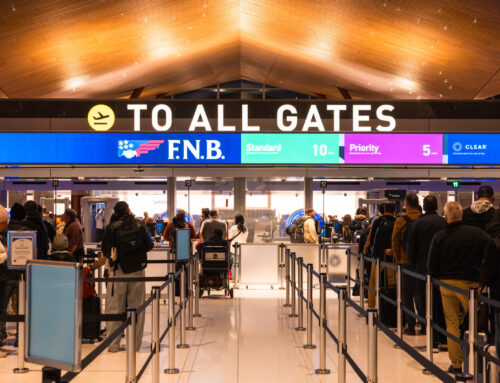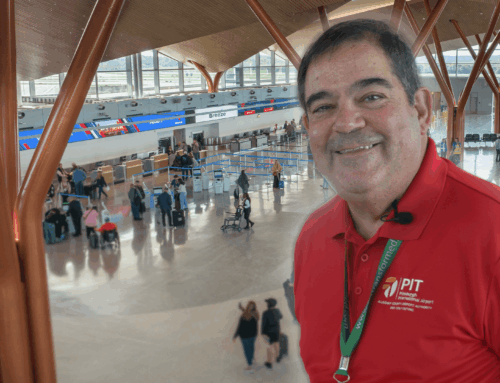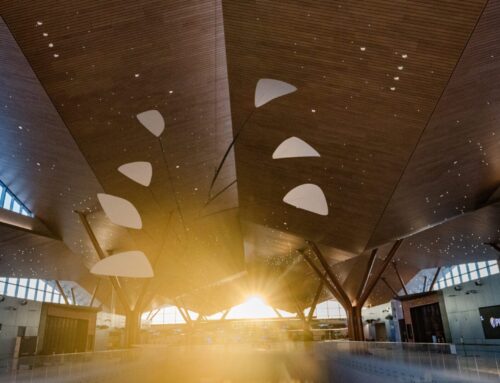Re-Imagining PIT in a Post-Pandemic World
Aviation leaders, health experts design future of airport facilities after COVID-19
By Alyson Walls
Published June 15, 2020
Read Time: 4 mins
Imagine an airport with monitors showing air quality readings in real time. Or automated stations similar to mini-car washes to clean and sanitize your luggage.
Picture a “clean team” of white-coated professionals greeting you, and a Chief Health and Wellness Officer ensuring that surfaces are disinfected and health protocols are followed.
Would you opt for contactless baggage delivery straight from the plane to your home or hotel? No more waiting around a carousel.
How about voice-activated elevators, restroom stalls and entry doors to Presley’s Place sensory room or the Mothers’ Nursing Lounge? No more touching handles, buttons or phones.
It’s not science fiction. These ideas and more were analyzed in Pittsburgh International Airport’s post-pandemic design workshops in recent weeks.
The workshops focused on identifying the highest-risk, or potentially “germiest,” common areas along the passenger and employee journey. Airport leaders are now evaluating which ideas could be implemented in current and future facilities at PIT through the Terminal Modernization Program (TMP).
With airports still suffering the effects of the COVID-19 pandemic, workshop participants said the “do nothing” option does not exist.
“For aviation to survive and potentially recover, there will have to be visible changes to the way people travel through the airport in order to provide reassurance that every step is being taken to minimize the risk of catching ‘the’ or ‘a’ virus,” said Barry Weekes, former design director at London’s Heathrow Airport. “Passengers will expect that their health, safety and well-being are being given the highest priority.”
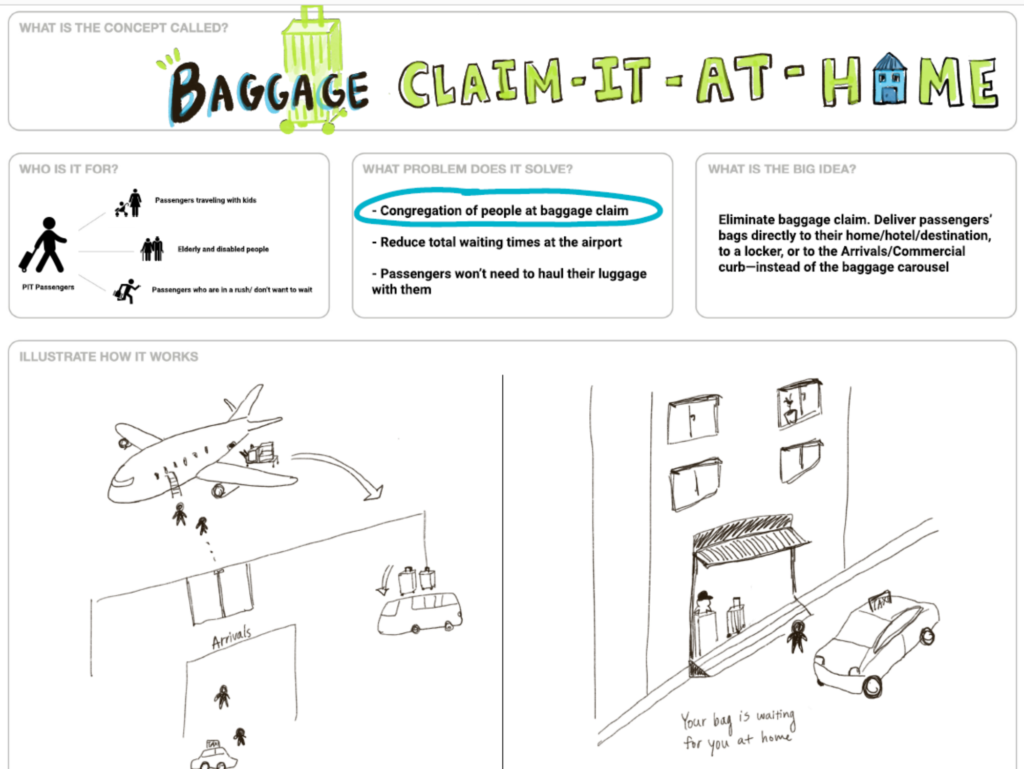
Concept posters displaying ideas for facilities improvements were developed by post-pandemic design workshop participants.
With construction of the TMP on hold due to impacts from the pandemic and the overall economic downturn, leaders have used the additional time to further consider how to incorporate public health improvements in a post-pandemic environment.
“The goal of these workshops is to develop ideas that create a seamless, safer, more secure and healthier airport experience for passengers, employees and visitors,” said Paul Hoback, Chief Development Officer. “There has been an amazing amount of creativity and thoughtful discussion around how to do that in light of new health concerns in public facilities.”
Now, Near, Next
Participants in the workshops, which are being facilitated by Pittsburgh-based LUMA Institute, include airport staff and TMP design team members, along with local, national and international experts in public health, aviation, architecture, construction, research and other fields. LUMA has previously assisted PIT with sessions on improving accessibility in the terminal.
“These workshops are about bringing together all of the groups that deliver the PIT airport experience to understand the science and the traveler mindset and come up with solutions and strategies which may help restore confidence for passengers and employees to feel safe using the airport and flying again,” Weekes said.
Common themes that emerged in the workshops include more predictability, cleanliness and flexibility of facilities and airport services.
Weekes helped participants categorize ideas into a “Now, Near, and Next” timeframe that helps airport leaders identify must-do activities as well as future innovation and change requiring further study.
For example, the idea of creating a chief health and wellness officer emerged as a “Now” idea. Real-time air-quality monitoring was listed as a “Near” idea needing more study, and the concept of sanitizing luggage and delivering baggage directly to passengers’ homes or hotels was categorized as a “Next” innovative idea for the future.
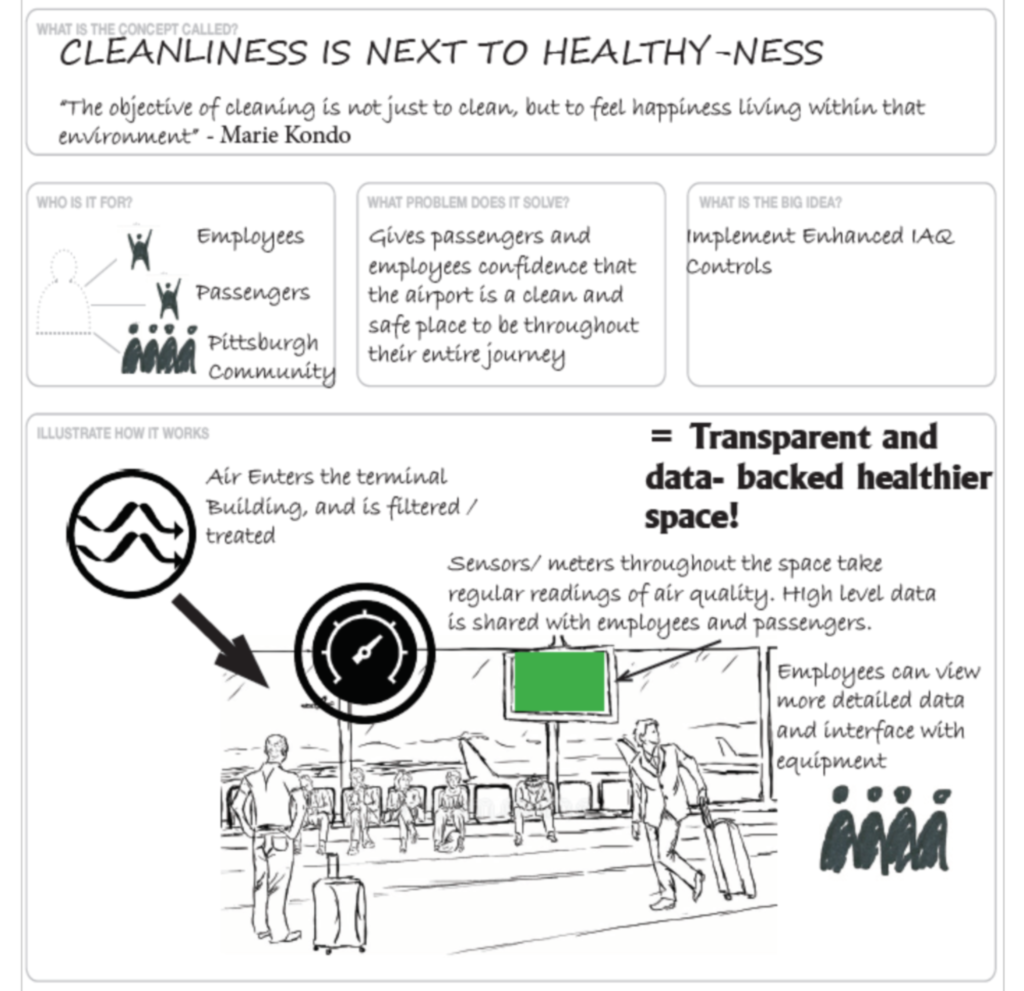
Ideas including air quality monitoring, an airport ‘clean team’/Chief Health and Wellness Officer and ‘Baggage Claim at Home’ will be evaluated over the next few months for possible implementation.
Weekes said post-pandemic discussions happening at airports around the world in recent weeks have touched on emerging trends in technology and other sectors. He noted that expectations around health and well-being for passengers and employees will continue to grow and be reflected in the future designs of airport terminals.
With Pittsburgh International’s new terminal and multi-modal complex at 60 percent design, the workshops come at an opportune time.
“The use of technology will continue to grow at a rapid pace, providing for more preference-based and predictable journeys for passengers and more data-driven operations… Congestion and queuing in the terminal and on the airfield should increasingly become a thing of the past as technology becomes increasingly autonomous,” Weekes said.
The next step for PIT is to identify which ideas progress for further study and implementation. From more flexible seating areas and movable furniture to telemedicine services for passengers and holograms (instead of floor stickers) to indicate proper social distancing, ideas will be further evaluated over the next few months for cost, risk and other factors.
“PIT is on the cusp of its own transformation, and it is essential that any newly designed facilities are flexible and adaptable enough to respond to any future pandemic, security or other threat operations,” Weekes said. “The TMP must have the right design, materials and technology in place to promote well-being, efficiency and safety for all its future users.”
Hoback agreed.
“What we do going forward is so important to the future of Pittsburgh International Airport,” he said. “We want to rebuild confidence in the traveling public that our facilities are the cleanest, safest and healthiest in the world, and we have an amazing team working on that right now.”

